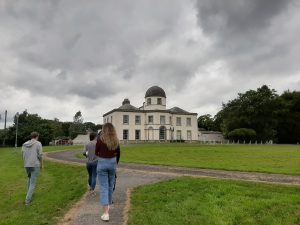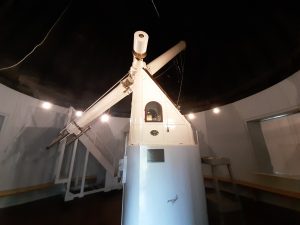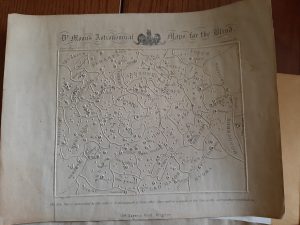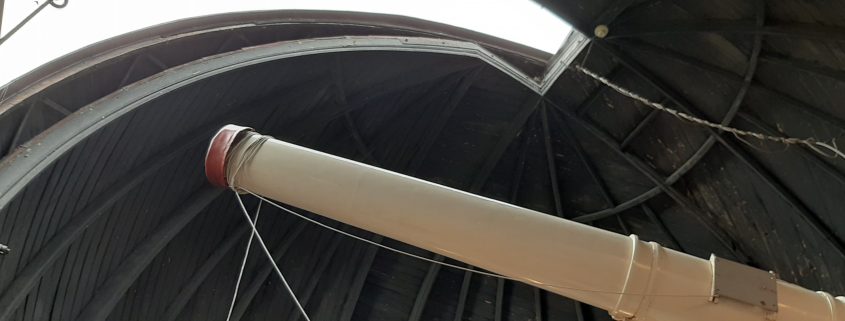Blog 3 – DIAS and Dunsink!
This week Jane and I are continuing to develop exhibits for the I-LOFAR Education Centre, creating posters and interactive elements to display for the public. Tour numbers have increased as Birr Castle reaches its summer peak, and a large number of people have booked for the 50th Anniversary of the Moon Landing ‘Star-B-Q’ at Birr Castle on Saturday the 20th of July! We’re also currently planning drop in workshops for young people on Thursday the 18th and Saturday the 20th of July.
On Wednesday we visited the Dublin Institute for Advanced Studies (DIAS) Astronomy and Astrophysics Department in Fitzwilliam Place in Dublin to attend a talk given by the Director of the Atacama Large Millimeter Array (ALMA), Dr. Sean Dougherty. ALMA is one of the world’s largest and most powerful telescopes, located in the Atacama Desert, Chile. The main array consists fifty 12 meter diameter dishes using interferometry (the same technology used in LOFAR) to act as one giant dish. There are another sixteen dishes at the site, four of which are 12 meters in diameter and the remaining twelve with 7 meter diameters. The dishes can be concentrated in a 150 meter area or moved apart to create a baseline of 16 km. They observe the universe in the millimeter and sub-millimeter wavelengths of light, in search of the formation of galaxies in the early universe and exoplanet formation around distant stars. (LOFAR in comparison observes in meter wavelengths)

DIAS – Director of ALMA talk. Credit DIAS Astronomy and Astrophysics
After the Director’s talk we visited Dunsink Observatory. The Observatory was constructed in 1785 using money left by the provost of Trinity College Dublin Francis Andrews in his will. It was run for a time by William Rowan Hamilton, the famous mathematician who developed Hamiltonian Mechanics and Quaternions (which are used in 3D Graphics). Many astronomers used the telescope to observe the night skies until Dublin expanded around it and light pollution reduced its visibility. The site was the first in Ireland to be given the title ‘European site of historical significance’ by the European Physical Society in recognition of its history. Today it is run by DIAS and is being refurbished. The large room that once housed the transit circle used to calculate ‘Dunsink Time’ (and hence ‘Dublin time’) now hosts open nights for the public. There are two domes visible at the observatory. The one on the roof of the building housed a smaller telescope said to be used by Hamilton’s students. It is now replaced with a modern refracting telescope. The large ‘South Dome’ on the front lawn houses the original 12 inch refracting telescope. We met some of the summer interns at DIAS who are in the process of creating a museum on the ground floor for the public and they gave us a tour of the incredible artefacts and history within the observatory.

DIAS Front Door Plaque

Dunsink Observatory

12 Inch Refracting Telescope in South Dome Dunsink

Star Map for the Blind at Dunsink Observatory
Jane and I are taking a road trip to Armagh this weekend to visit Armagh Observatory and Planetarium and the IAU 100 Exhibit so keep an eye out for our next blog!
Blog post written by Jeremy, you can find him on Twitter @jeremy.rigney. Jane is also on Twitter, find her @JaneDooley98



